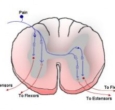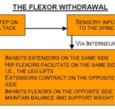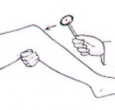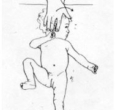Why Synchronize Brain Function?

by Michael D. Allen, DC, NMD Functional Neurologist Psychologists have observed that people with learning disabilities process input from their environment differently than those with more “neuro-typical” brains. Many people with learning difficulties just think differently. Giving a person with learning difficulties complicated directions often dooms them to failure. More words require a longer attention […]
Galant Reflex: The Postural Response to Stroking the Lumbar Flank
- Apr, 23, 2015
- thebook+
- Reflexes
- Comments Off on Galant Reflex: The Postural Response to Stroking the Lumbar Flank

The Galant reflex (or Galant’s infantile reflex, named after the Russian neurologist Johann Susman Galant) is commonly observed in newborns and is said to fade between the ages of four and six months. It helps rule out brain damage at birth. Elicit Galant’s reflex by holding the newborn in a face down posture or laying them […]
The Importance of Reciprocity to Human Performance

The Crossed Extensor Reflex (CER; also known as the crossed cord reflex) is a protective response that apparently begins at about the 28th week of gestation and is functionally integrated one to two month after delivery. It is functionally significant in back-and-forth (or reciprocal) muscle actions. Its dysfunction can interfere with activities like running and […]
Physiological Significance of the Protective Response
- Feb, 06, 2015
- thebook+
- Reflexes
- Comments Off on Physiological Significance of the Protective Response

The Idea: Human physiological reflexes have a predictable display. Either they work according to their original design or they are pathological. There are no other choices. If a reflex displays itself in ways other than according to its preprogrammed format, it must be considered to be pathological, and it increases the risk of injury. Reflex […]
Functional Display of the Deep Tendon Reflex

Striking a tendon has an almost instant display. A quick stretch to the patellar tendon, for xample, should register with an involuntary jerk of the knee; the foot kicks. This “knee jerk” deep tendon reflex (DTR) test is a common part of even the most basic neurological exam. It assesses the functional integrity of the […]
Taking Up The Fencing Posture

The neck receptors give rise to a primitive reflex—the Tonic Neck Reflex (TNR)—found in newborn humans. Books say that the TNR normally vanishes by the child’s first birthday, but that appears to be functionally and demonstrably untrue. The TNR persists throughout life and is a fundamental tool for neurological examination. The TNR is fundamental to […]



